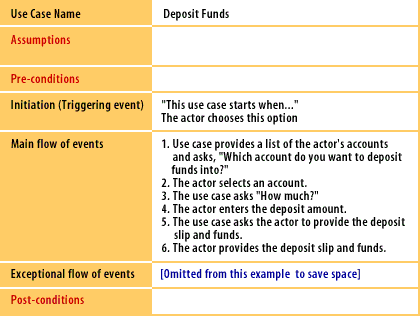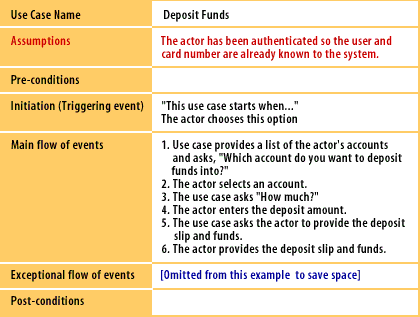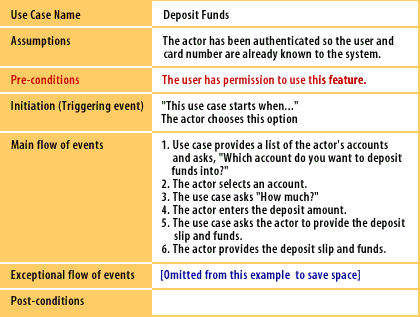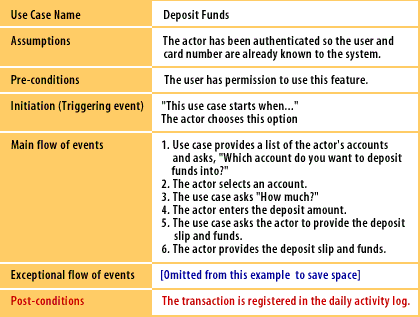Difference between Use Case Narrative and Extended Use Case Narrative
A use case narrative and an extended use case narrative are both methods of documenting use cases, but they differ in the level of detail they provide.
A use case narrative is a high-level description of a use case that outlines the steps involved in achieving a specific goal. It is typically written in a narrative or story-like format and provides a broad overview of the use case's main flow. The narrative is usually short, concise, and easy to understand, making it suitable for a wide range of audiences.
An extended use case narrative, on the other hand, provides a more detailed description of a use case. It goes beyond the high-level overview provided by a use case narrative and includes additional information about the use case's actors, preconditions, postconditions, and exceptions. It may also include more detailed descriptions of each step in the use case flow, as well as any alternative flows or variations. The extended use case narrative is typically written by analysts or developers who need a more comprehensive understanding of the use case and its requirements. It is more technical in nature, and may include diagrams, tables, or other visual aids to help illustrate the use case flow and its various components.
In summary, the main difference between a use case narrative and an extended use case narrative is the level of detail they provide. A use case narrative is a high-level overview of a use case, while an extended use case narrative provides a more detailed description of the use case and its various components.
An extended use case narrative, on the other hand, provides a more detailed description of a use case. It goes beyond the high-level overview provided by a use case narrative and includes additional information about the use case's actors, preconditions, postconditions, and exceptions. It may also include more detailed descriptions of each step in the use case flow, as well as any alternative flows or variations. The extended use case narrative is typically written by analysts or developers who need a more comprehensive understanding of the use case and its requirements. It is more technical in nature, and may include diagrams, tables, or other visual aids to help illustrate the use case flow and its various components.
In summary, the main difference between a use case narrative and an extended use case narrative is the level of detail they provide. A use case narrative is a high-level overview of a use case, while an extended use case narrative provides a more detailed description of the use case and its various components.
Extended use case narrative

Use Case Name: Deposit Funds


